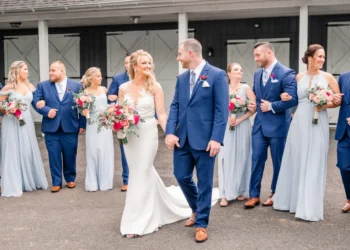However, I can provide a general overview of traditional South Indian Nair wedding rituals. Keep in mind that customs may vary among different communities and regions. It’s best to consult with individuals from the Nair community or refer to specific cultural sources for accurate and detailed information.
Nair Wedding Rituals
The Nair community, hailing from the southern Indian state of Kerala, boasts a vibrant tapestry of traditions that make their weddings truly unique and culturally rich. Join us as we unravel the fascinating Nair wedding rituals, deeply rooted in centuries-old customs and symbolic significance.

The journey of a Nair wedding begins with ‘Nischayam,’ the formal engagement ceremony. Families come together to announce the union, exchange gifts, and seek the blessings of elders. This event marks the formal commitment of the couple and sets the stage for the upcoming wedding festivities.
Nischayam
The first ceremony is the Vivaha Nischayam or simply Nischayam. In Kerala Hindu marriages, horoscope matching is a must. But, the horoscope should be match before going in for a meeting between the boy and the girl. After both the families consent to the marriage, the elders of the bride and the bridegroom assemble at the bride’s home and an astrologer is consult to set an auspicious date for the wedding. Horoscopes that have already been compare and approve are exchang during this ceremony.

During the celebration, there may be a mother-marital ceremony. But in some other families, there will be a formal interchanging of letters between the families. For example, in Nair community marriages, the NSS Karayogam people from both sides will assemble at the bride’s house and the parents of both the bride and groom will exchange letters regarding the time and venue of the marriage in the presence of the Karayogam officials. A feast will be conducte thereafter.
Aashirwaadam
Also known as the pre-nuptial blessing, this custom is essential to every Kerala matrimony and takes place a day before the wedding. The close relatives and family members of the bride and groom attend this ceremony. It is perform to receive blessings from dear and elder ones for a happy and prosperous wedding life. The bride wears a stunning silk saree while the groom is fashion in traditional attire.

If “Aashirwaadam Nair” refers to a particular community or tradition, I recommend consulting local sources or individuals who are knowledgeable about the customs and rituals associated with that community or tradition. Wedding rituals can vary significantly across different cultures, regions, and communities, and it’s essential to get accurate and up-to-date information from authoritative sources.
Mehendi
The Bridal Mehendi Ceremony is similar to other Mehendi ceremonies conduct across India. Contrary to the traditional Mehendi function, where Henna artists are call in to apply scintillating designs, at Kerala Nair wedding ceremonies, the bride’s aunts draw pretty patterns on her hands and feet. A henna tattoo artist may take up after the initial rituals are over.

This ritual involves the first entry of the newly wed in to the bridegroom’s house. The groom’s mother and elder female relatives perform aarti with an oil lamp (which rests on a platter heaped with rice mixed with turmeric) and receive them at the entrance. Both bride and groom enter the house, right foot forward. The bride carries the lit oil lamp that her mother-in-law gives her after arthi, symbolizing prosperity.





